The world of football is made up of 6 main football federations; UEFA, CONCACAF, CONMEBOL, AFC, CAF & OFC. These governing bodies look after different areas of world football, roughly along the lines of the geographical continents of the world.
Each federation runs its own competition for both its national sides and its clubs, as well as entering its national sides into the FIFA World Cup and its club competition winners into the FIFA World Club Championship, the two competitions to determine the best national and club team, respectively, in the world.
Each federation also organises the media coverage of their events, for which it receives monies and from which it awards prize money. They also regulate and discipline the organisations (leagues etc) within their legislation, following the guidelines set down by the big-boss-man; FIFA.
UEFA
Official website: http://www.uefa.com.

UEFA is the governing body of European football and is by far the most lucrative and most watched of all the confederations. The UEFA Champions League is considered by many players and viewers to be the ultimate competition in club football, as is shown by the majority of players who compete in the latter stages of the World Cup, playing their club football in Europe. Other than Brazil and Argentina, the majority of the world’s most successful national sides are in UEFA and it has the most entrants into the FIFA World Cup, which is currently 14.
The richest clubs in the world are mainly in the English Premier League, followed by Italy’s Serie A and Spain’s La Liga. These leagues offer the highest wages for players and, as a result, attract the biggest stars of the world game. Unsurprisingly, football agents are constantly trying to push for deals with teams in these leagues (not that football agents are all money-grabbers or anything!).
UEFA stands for the Union of European Football Associations and is headed by French goalscoring legend Michel Platini. It was formed in France over half a decade ago and is this year spending it’s 50th year headquartered in Switzerland.
UEFA contains a number of nations that would be expected to be in the Asian federation, such as Turkey, Kazakhstan, Russia and Israel, but choose to ply their trade in UEFA for religious, political and financial reasons.
Competitions
UEFA’s national tournament is the European Championships, which take place every four years on the middle year between FIFA World Cups. The tournament began in 1960, being called the European Nations Cup for the first 2 instances and for the first 20 years the finals just involved 4 teams. It then doubled in 1980 to 8 teams and from the ’96 competition doubled again to 16. Plans are in place to increase it to 24 teams from 2016. The most successful team in the competition with 3 wins is Germany, 2 of which came as West Germany.
The club teams of UEFA can qualify for one of two main competitions, the elite of which is the UEFA Champions League. The secondary cup is now known as the , as part of a rebranding and re-organising bid to increase its profile.
The UEFA Champions League is commercially the largest club competition in the world and the television rights for it are sold for millions all over the globe. Matches are broadcast on over 110 channels worldwide, in over 80 countries, a large amount of which are not in Europe, so the scope of the competition is astounding.
Originally known as the European Cup (well, European Champion Clubs’ Cup officially) from its inception back in 1955, it changed to its current format in 1992. The competition’s popularity has magnified since the redevelopment and the teams compete to win not just the trophy but also the huge sums of money that are available. The winning team can net over 50m in prize money and can double that figure with television and sponsorship deals. The amounts of money in total generated by the competition are utterly obscene and has heavily contributed to the madness we now see in the world of football, such as Man City’s infamous Kaka bid, or Real Madrid’s signings of Kaka and Ronaldo.
The Champions League runs annually from July through May and from 2009/2010 on will have some changes to the format, mostly to allow the champions of the lesser nations better access to the group stages, and also the final will now take place on a Saturday evening instead of a Wednesday.
The most successful club in the history of the competition is Real Madrid, with 9 titles, followed by AC Milan with 7 and Liverpool with 5. Aston Villa won the competition in 1982.
The secondary competition for European club sides is the UEFA Cup, which has become the Europa League since 09/10. The competition has changed fairly significantly in a bid to promote it further, the group stage changing from it’s previous format where teams only play each other once, to a home and away tie, with groups of 4 instead of 5.
Originally the final was a two-legged affair, the first ever final taking place in the very unglamourous location of Wolverhampton.
Women’s football
For the girls, UEFA runs the European Women’s Championship for the national sides, the next of which will be this summer in Finland and for the club sides there is the UEFA Women’s Cup which is annual.
CAF
Official Website: http://www.cafonline.com/.
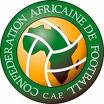
The Confederation of African Football (or Confederation Africaine de Football as it’s known to it’s mom) covers the giant continent of Africa and is the federation that follows it’s geographical continent the closest. It has the most member nations, even more so than UEFA, and the only place in Africa omitted is the territory of Western Sahara, on the northern section of the West Coast.
Over history, African nations have struggled to compete in world football, due to economic difficulties in large parts of the continent, but recent success stories such as Adebayor, Eto’o, Drogba, Essien and (who can forget) Roger Milla, prove that the talent is not lacking there.
The CAF is over 50 years old and sweats it’s tits off in the scorching heat of Cairo, where it calls home. The president is a fella called Issa Hayatou, who actually plied his sporting trade as a runner and basketballer. Seven years ago he competed against Sepp Blatter in the election for president of FIFA and Blatter’s win attracted a lot of scepticism, from Hayatou fans and others wary of Blatter and his ways.
Competitions
Club-wise, the CAF run a competition very similar to the UEFA Champions League, called the CAF Champions League, which operates as a knockout cup, then a group stage, then back to knockout for the final stages. The clubs aim to win the main prize pot of $1m and during it’s 44 years, Egypt has been the most dominant nation in the competition, particularly Al-Ahly and El Zamalek.
The secondary club competition is the CAF Confederation Cup, which began in 1975 as the African Cup Winners’ Cup.
Nation-wise, the CAF organises the African Cup of Nations, which takes place every 2 years in January and February. Due to pressure from European clubs, the competition is being forced to change to the summer and will also have to switch the year it runs in order to not clash with the FIFA World Cup. The CAF are not happy with these enforced changes, mainly because the majority of Africa does not have suitable weather conditions in June and July for playing football, so it will seriously reduce the amount of host locations. Much like the Champions League, Egypt are the most successful nation in the competition.
Women’s football
The CAF Women’s Championship takes place every 2 years, beginning in 1991 and has been won by Nigeria 7 out of its 8 times.
AFC
Official website: http://www.the-afc.com.
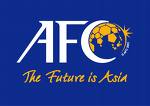
The AFC governs the footballing community of Asia and also now includes Australia, but it doesn’t include a number of Asian (or part-Asian) countries, who are part of UEFA. The AFC is headquartered in Kuala Lumpur, the capital of Malaysia.
Like it’s European cousin, the AFC was formed in 1954, so is this year in it’s 55th year. Unlike UEFA though, the president is not a former footballer, but a man who is now combining a successful background in business with a passion for football.
Competitions
The AFC runs a four-yearly federation wide competition for the nations called the Asian Cup, which takes place the year after the FIFA World Cup.
They also run a competition, designed to help the lesser nations taste some success, called the AFC Challenge Cup. This is a relatively new tournament that takes place every two years, the first of which was in 2006 and the next of which will be just a few months before the 2010 World Cup in South Africa.
For the clubs of the AFC, the primary competition is the AFC Champions League and the secondary tournament is the AFC Cup.
Women’s football
The AFC has a women’s leg, which runs a two yearly championship (on World Cup year and the middle year in between), but large parts of central, southern and western Asia do not have participating women’s teams because of cultural and religious reasons.
CONCACAF
Official website: http://www.concacaf.com/.
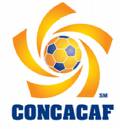
CONCACAF stands for (take a deep breath) the Confederation of North, Central American and Caribbean Association Football and is the body that governs the national and club football of North and Central America, the Caribbean islands and also includes Guyana, Suriname and French Guiana, from South America.
There are 40 member nations of CONCACAF, though around 90% of the geographical area is taken up by just two nations (USA and Canada),
Competitions
The nations of CONCACAF compete in the Gold Cup, a two-yearly competition and the most successful team in it’s history is Mexico but in the last 20 years the USA have seen a large amount of success, finishing in the top 3 in 9 out of 10 competitions.
For the clubs there is only one competition; the CONCACAF Champions League. Up until 2008 it was known as the Champions Cup but is now looking to boost its profile with a rebranding, particularly with soccer’s growing popularity in the United States.
Women’s football
The CONCACAF Women’s Gold Cup is two-yearly and has been won every time by USA (except in ’98 when they didn’t participate) since it’s inception in 1991.
CONMEBOL
Official website: http://www.conmebol.com/.
Background
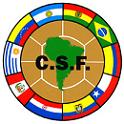
Despite being the grandfather of the federations, CONMEBOL is the smallest one with just 10 member nations, but it can be argued that Brazil are so good that they count as 10 nations.
Whilst UEFA rules the roost club-wise, CONMEBOL are the record holders for international football. They are the only federation to have won the FIFA World Cup outside their own continent, having won it at least once in every continent it’s been held. This is primarily down to Brazil and Argentina (7 World Cup wins between them), but Uruguay have also got 2 World Cup wins under their belts.
The headquarters are in Luque, near Asuncion, the capital of Paraguay and the current president, Nicolás Léoz, has headed the organisation since 1986. Léoz made his name as a businessman before becoming part of CONMEBOL and has recently turned 80.
Competitions
The national sides of CONMEBOL compete in the Copa America, the oldest international football competition in existence. The 10 members are joined by 2 invited teams, to date these have been USA, Mexico, Costa Rica, Japan and Honduras. The competition is primarily dominated by Argentina, Uruguay and Brazil, winning 36 of the 42 tournaments between them.
At club level, CONMEBOL’s top competition is the Copa Libertadores, which is an annual cup that sees the best teams in CONMEBOL’s leagues (plus Mexican teams are invited) compete in a group-stage-and-then-knockout-rounds style competition.
A secondary competition began in 2002 which also takes place annually; the Copa Sudamericana. This tournament includes teams from CONMEBOL and recently also CONCACAF. The Copa Sudamericana has a little less dominance from Brazil and Argentina, with teams from Peru, Bolivia, Mexico, Columbia and Chile all having reached the final.
Women’s football
CONMEBOL run a competition for the women’s national sides, taking place a little sporadically but roughly every 3-4 years. It began in 1991 and a Brazillian dominance is evident, having won 4 of the 5 titles and being runners up in the other one.
OFC
Official website: http://www.oceaniafootball.com/.
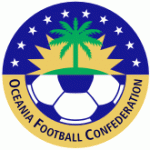
Formed in 1966, the Oceania Football Confederation is the federation for the pacific islands located around Australia, though since 2006 it no longer contains the Aussies. Without them, the OFC is positively miniscule by comparison with the other federations.
There are 17 member nations in the OFC, largely made up of very small pacific islands where football isn’t the main sport. Australia as a country is around 10 times bigger than every other OFC nation put together, so they unsurprisingly dominated the federation and this led them to move to the AFC, in order to seek bigger challenges and to ‘give the others a chance’.
Competitions
The OFC Nations Cup is the national competition in Oceania and has taken place 8 times with just 2 winners; New Zealand and Australia winning 4 each. Since ’96 it has been a two-yearly competition, taking place at various times in the year ranging from May to November.
The OFC Champions League has also only been won by Australian and New Zealand sides. It is a much lower profile competition than many other versions of the Champions League around the world.
Women’s football
Much like in the men’s competitions, the OFC Women’s Championship is dominated by New Zealand and Australia, but has been won twice by Chinese Taipei (Taiwan).
Football Federations – Fact Box
| Federation | Geographic area | Member nations | Founded | National competition | Main club competition | Secondary club competition |
|---|---|---|---|---|---|---|
| AFC | Asia | 46 | 1954 | Asian Cup | Champions League | AFC Cup |
| CAF | Africa | 55 | 1957 | Africa Cup Of Nations | Champions League | Confederation Cup |
| CONCACAF | North & Central America | 40 | 1961 | Gold Cup | Champions League | Champions’ Cup |
| CONMEBOL | South America | 10 | 1916 | Copa America | Copa Libertadores | Copa Sudamericana |
| OFC | Oceania | 17 | 1966 | Nations Cup | Champions League | N/A |
| UEFA | Europe | 53 | 1954 | European Championship | Champions League | UEFA Cup |
More Football Federations articles:
FIFA (International Federation of Association Football)
AFC (Asian Football Confederation)
CAF (Confederation of African Football)
CONCACAF (Confederation of North, Central American and Caribbean Association Football)
CONMEBOL (Confederación Sudamericana de Fútbol)
OFC (Oceania Football Confederation)
UEFA (Union of European Football Associations)
Add Sportslens to your Google News Feed!